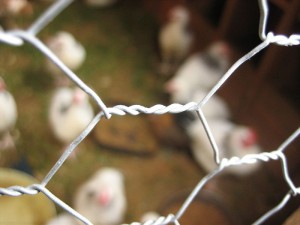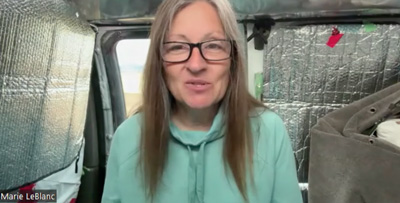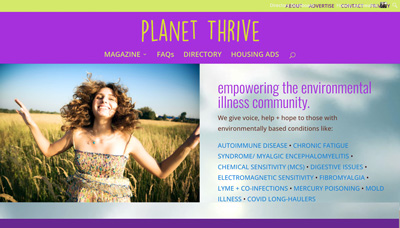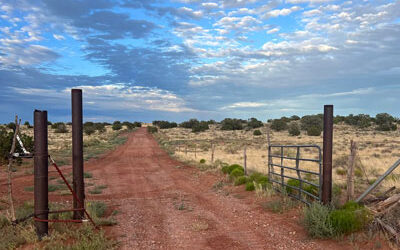 The Wall Street Journal reports that chicken wire can act as a “Faraday cage” and block wireless signals from entering a room. Their story focuses on homes built in San Francisco prior to the 1950’s, when walls were made with plaster applied to lath. “Often, lath in Victorian and Edwardian-era homes was made of wood stapled with chicken wire, a cheap fencing material that also doubles as lightweight support. The problem occurs in other cities too, but San Francisco has an unusually dense collection of old homes and gadget lovers.” The walls not only block WiFi but cell signals as well, frustrating landlords and tenants alike. Some have gone to great lengths to try to resolve the problem, to no avail. Little do they realize that they are actually quite fortunate, as both WiFi and cell signals are thought to damage health long-term, although there are no definitive, unbiased studies available yet. The implications are strong enough, however, for governments (in Germany, the European Union) to warn their citizens against their use. read the full story
The Wall Street Journal reports that chicken wire can act as a “Faraday cage” and block wireless signals from entering a room. Their story focuses on homes built in San Francisco prior to the 1950’s, when walls were made with plaster applied to lath. “Often, lath in Victorian and Edwardian-era homes was made of wood stapled with chicken wire, a cheap fencing material that also doubles as lightweight support. The problem occurs in other cities too, but San Francisco has an unusually dense collection of old homes and gadget lovers.” The walls not only block WiFi but cell signals as well, frustrating landlords and tenants alike. Some have gone to great lengths to try to resolve the problem, to no avail. Little do they realize that they are actually quite fortunate, as both WiFi and cell signals are thought to damage health long-term, although there are no definitive, unbiased studies available yet. The implications are strong enough, however, for governments (in Germany, the European Union) to warn their citizens against their use. read the full story
-
Earthwalker is the username that PT founder Julie Genser created for her online interactions so many years ago when first creating Planet Thrive.
Julie's (Earthwalker's) life was derailed over twenty years ago when she had a very large organic mercury exposure after she naively used a mouth thermometer to measure the temperature of just-boiled milk while making her very first pizza at home. The mercury instantly expanded into a gas form and exploded out the back of the thermometer right into her face. Unaware that mercury was the third most neurotoxic element on Earth, Julie had no idea she had just received a very high dose of a poisonous substance.
A series of subsequent toxic exposures over the next few years -- to smoke from two fires (including 9/11), toxic mold, lyme disease, and chemical injuries -- caused catastrophic damage to her health. While figuring out how to survive day-to-day, and often minute-to-minute, she created Planet Thrive to help others avoid some of the misdiagnoses and struggles she had experienced.
She has clawed her way over many health mountains to get to where she is today. She is excited to bring the latest iteration of Planet Thrive to the chronic illness community.
In 2019, Julie published her very first cookbook e-book called Low Lectin Lunches (+ Dinners, Too!) after discovering how a low lectin, gluten free diet was helping manage her chronic fascia/muscle pain.
View all posts
 The Wall Street Journal reports that chicken wire can act as a “Faraday cage” and block wireless signals from entering a room. Their story focuses on homes built in San Francisco prior to the 1950’s, when walls were made with plaster applied to lath. “Often, lath in Victorian and Edwardian-era homes was made of wood stapled with chicken wire, a cheap fencing material that also doubles as lightweight support. The problem occurs in other cities too, but San Francisco has an unusually dense collection of old homes and gadget lovers.” The walls not only block WiFi but cell signals as well, frustrating landlords and tenants alike. Some have gone to great lengths to try to resolve the problem, to no avail. Little do they realize that they are actually quite fortunate, as both WiFi and cell signals are thought to damage health long-term, although there are no definitive, unbiased studies available yet. The implications are strong enough, however, for governments (in Germany, the European Union) to warn their citizens against their use. read the full story
The Wall Street Journal reports that chicken wire can act as a “Faraday cage” and block wireless signals from entering a room. Their story focuses on homes built in San Francisco prior to the 1950’s, when walls were made with plaster applied to lath. “Often, lath in Victorian and Edwardian-era homes was made of wood stapled with chicken wire, a cheap fencing material that also doubles as lightweight support. The problem occurs in other cities too, but San Francisco has an unusually dense collection of old homes and gadget lovers.” The walls not only block WiFi but cell signals as well, frustrating landlords and tenants alike. Some have gone to great lengths to try to resolve the problem, to no avail. Little do they realize that they are actually quite fortunate, as both WiFi and cell signals are thought to damage health long-term, although there are no definitive, unbiased studies available yet. The implications are strong enough, however, for governments (in Germany, the European Union) to warn their citizens against their use. read the full story









I wrote this to the writer of that article:
Dear Geoffrey Fowler,
I enjoyed your article very much. I just wish you had added one
thing; for many, electromagnetic signals prove to be a health
challenge called EMF sensitivity. In my personal opinion, it’s better
for those tenets mentioned in your article to lose convenience by
losing access to Wi-Fi, as it will reduce their risk of illness caused
by the rampant use of wireless signal technology in our society! But
I’m old fashioned, an “analog girl in a digital world” as Erykah Badu
says. Never-the-less, it might have been interesting to your readers
to know that there are many people out their who would happily live in
a chicken wire house for just the same reason the landlord in your
article hated it!
Well, thanks for reading,
yours,
Rachel
Good for you Rachel!! Thanks for doing that, on behalf of all of us with EMF issues. It’s so sad to see people trying everything they can to alter something that is actually protecting them and that many of us would prefer if given the choice. Thankfully they were unsuccessful in resolving the issue the way they wanted to!